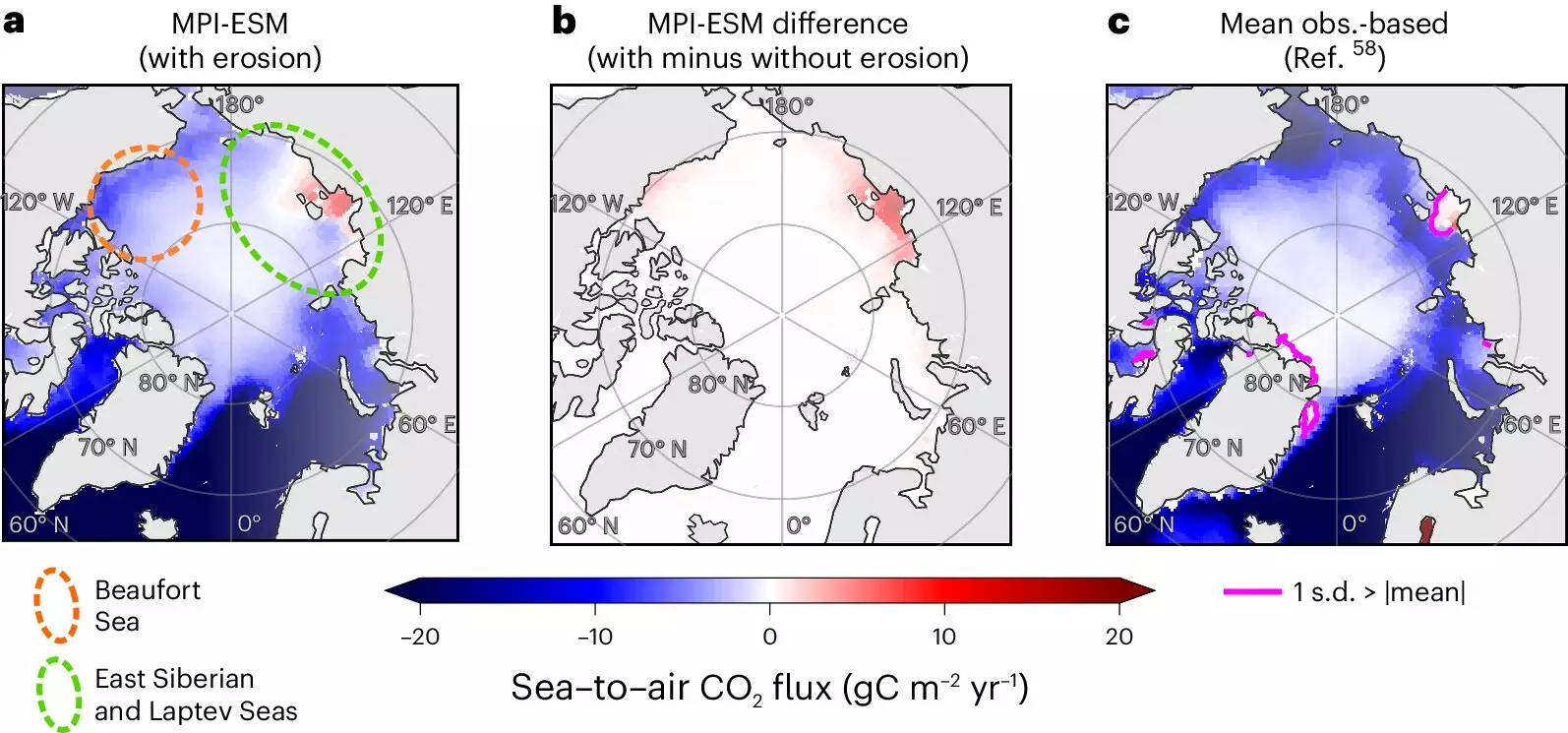As climate change continues to escalate, researchers are increasingly alarmed by its effects on the Arctic region, particularly the Arctic Ocean’s capacity to mitigate atmospheric carbon dioxide levels. A recent study published in *Nature Climate Change* highlights a distressing trend: melting permafrost and advancing coastal erosion are diminishing the Arctic Ocean’s role as a carbon sink. This article analyzes the research findings that paint a grim picture for the future of not only the Arctic but also global climate stability.
The study indicates that the Arctic’s coastal permafrost, which has historically played a crucial role in sequestering carbon, is now releasing more carbon dioxide than it absorbs. An alarming prediction forecasts that by the year 2100, coastal permafrost erosion could lead to an annual increase in atmospheric carbon that parallels approximately 10% of all car emissions across Europe in 2021. Such statistics serve as a wake-up call, illustrating the fragility of the Arctic ecosystem in the face of human-induced climate disturbances.
Permafrost refers to soil that remains frozen for extended periods, contributing to a stable carbon reservoir. Unfortunately, due to rising global temperatures—reportedly 3 to 4 times the global average—the permafrost is beginning to thaw at an accelerated pace. Consequently, many regions that were once insulated from the impacts of climate change are grappling with increasing vulnerability. As David Nielsen, the lead author and researcher at the Max Planck Institute for Meteorology, notes, these dynamics create an unintentional feedback mechanism: as permafrost melts, CO2 is released into the atmosphere, thereby further intensifying climate change.
The study underscores that during summer months, thawing soil opens up previously frozen landscapes to the erosive forces of wind and waves, thus aggravating coastal erosion. This process not only mobilizes carbon-rich soil into the ocean but also diminishes the ocean’s chemical capacity to absorb CO2—a double whammy in the equation of climate change mitigation.
The ramifications of diminishing carbon sequestration extend beyond abstract statistics; they pose tangible risks to local ecosystems and communities. Notably, coastal regions like Alaska’s Shishmaref are facing an existential threat due to intensified erosion, sea level rise, and increased frequency of storms. The reality is that entire communities may be pressured into relocation, not merely as a result of loss of residence but also as a consequence of loss of heritage and archaeological significance.
The study found that some “hot spots” of acute permafrost erosion, such as the Mackenzie River Delta in Canada and parts of Siberia, are already witnessing negative impacts including ocean acidification. Such environmental shifts could lead to substantial losses in biodiversity, further endangering the intricate web of life that has thrived in these delicate ecosystems for millennia.
Despite its local-scale implications, the study’s findings underscore the Arctic’s relevance in the context of global climate change. While researchers acknowledge that the carbon contributions from Arctic coastal permafrost erosion represent only about 0.1% of worldwide human emissions, it is essential to grasp the cumulative effects of these changes.
Each degree Celsius of global warming could further exacerbate the carbon release from the Arctic region by an estimated 1.1 to 2.2 million tons annually. Although relatively small compared to overall emissions, these figures highlight the interconnectedness of global climate dynamics. The Arctic acts as a barometer for climate change effects worldwide, suggesting that continued warming may trigger further degradation elsewhere across the globe.
Nielsen emphasizes the need for intensified research and refined models to better understand the intricate processes at play in the Arctic. Only by gaining deeper insights can we begin to mitigate these alarming trends effectively.
This finding should serve as a clarion call—not only for scientists but for policymakers and communities globally. Prioritizing measures to reduce fossil fuel consumption and curtail greenhouse gas emissions will be crucial in averting a worsening scenario. As the climate crisis accelerates, it becomes imperative to act with urgency to safeguard our planet’s future and mitigate the loss of crucial carbon sinks like the Arctic Ocean.
The evolving dynamics of permafrost erosion and its implications for the Arctic Ocean’s CO2 absorption capacity signal a critical juncture in our ongoing battle against climate change. Only collective awareness and responsible action can help us navigate this precarious situation for a more sustainable future.


Leave a Reply